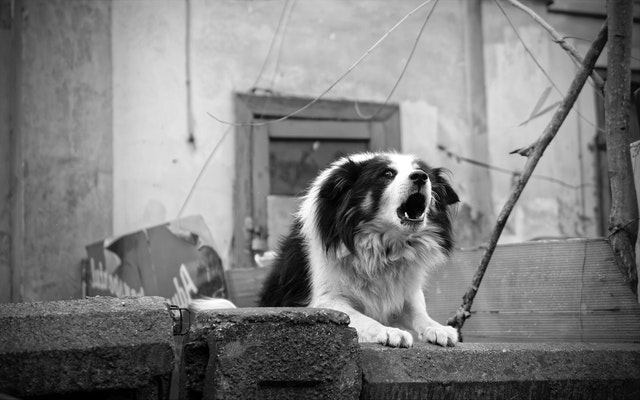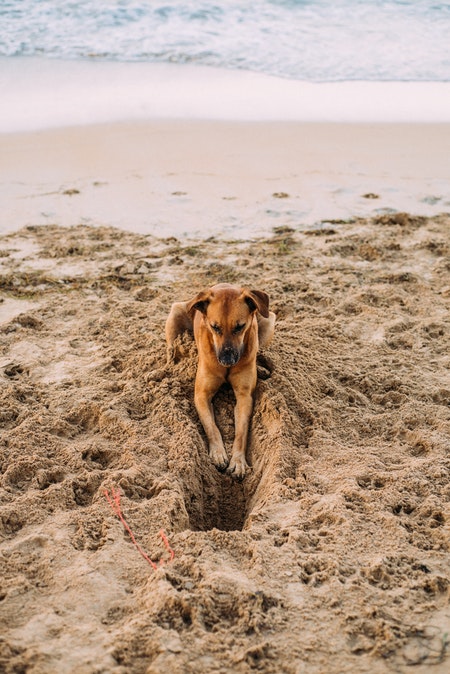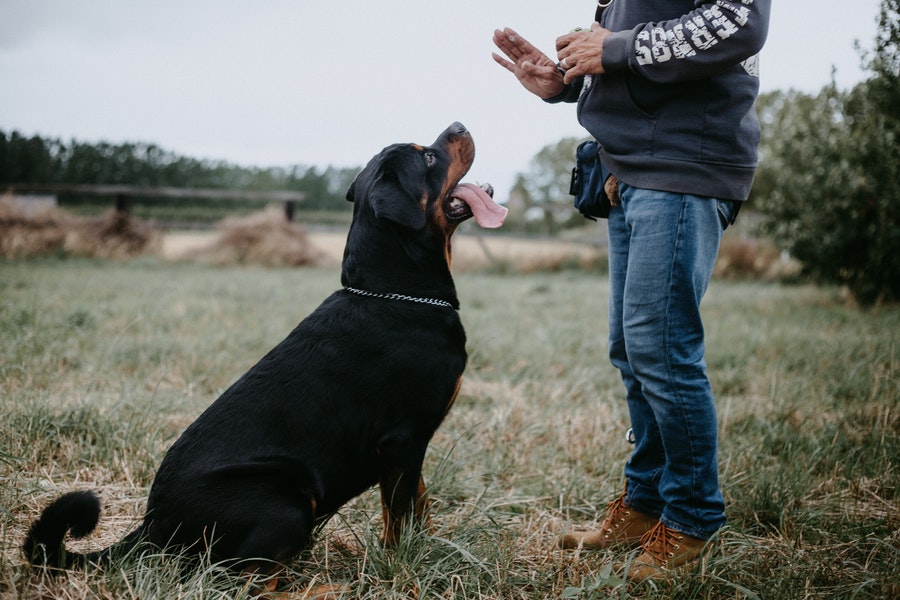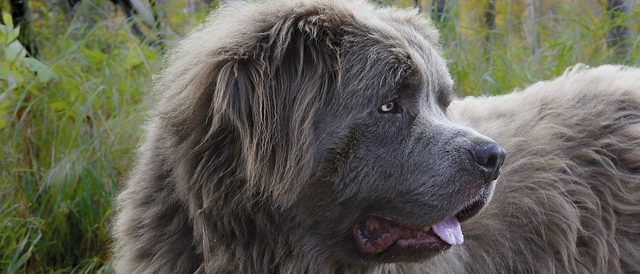Dog behavior is often misunderstood by dog owners. A dog always adopts a behavior following an event. While it is natural for him, sometimes his behavior becomes embarrassing for his human family. Understanding the most common dog behavioral problems is the first step in solving and preventing them.
Here are the 10 most common dog behavior problems.

1 Barking
Among the 10 most common dog behavior problems is nuisance barking. The nuisance barking most dogs vocalize in one way or another. They can bark, howl, moan, and more. Excessive barking is considered a behavior problem. Vocalization is one of the many ways in which dogs communicate.
Before you can correct excessive barking, determine why your dog has started vocalizing. Here are the most common reasons for a dog to vocalize:
Out of fear or anxiety
By excitement
Out of frustration, to ask for attention
Out of boredom
To alert
In response to other dogs
Some dogs will tend to vocalize more than others. You can teach your dog to be “silent” by rewarding times when he does not vocalize. But, first of all, you need to find the underlying causes of the barking. If your dog is anxious you probably need to bring him to safety. If it is out of frustration, he must be taught to deal with his emotional outbursts. If it is out of boredom, there is no doubt that you have to meet his needs.
2 Chewing and destruction
Nibbling, chewing, destroying with its jaw: toys, pieces of wood or any other object is a natural action in dogs. It is even an important activity for the dog’s balance. However, excessive chewing can quickly become a behavior problem if your dog is constantly destroying things around him. The most common reasons dogs destroy are:
Boredom or overflow of energy
Anxiety
For puppies: the teeth growing
Out of curiosity (especially in puppies)
You should then encourage your dog to destroy acceptable things by providing him with plenty of suitable chew toys. Keep personal items away from your dog. When you’re away from home, don’t leave the things you care about lying around.
One of the most important things you can do is get your dog to exercise so that he can use up his energy and be stimulated in this way rather than chewing things.

3 Make holes and dig in the garden
If given the chance, most dogs will dig holes. It’s a matter of need and instinct. Certain breeds of dogs, such as terriers, are more prone to digging due to their hunting history. In general, most dogs dig for:
Out of boredom
Excessive energy
To hide objects or food
Because of the hunting instinct
To hide or keep cool
To escape and gain access to an area
It can get quite frustrating if your dog enjoys digging in your yard. Try to determine the cause of the search, then try to eliminate that source. Also, don’t hesitate to encourage him to dig during the walks so that he discharges his energy outside your backyard. Finally, don’t do any gardening with him. This will prevent him from enjoying it if it bothers you.

4 Separation anxiety
Many dogs don’t learn to be alone. This is why when the dog is left alone, he becomes anxious and may even panic. A dog with separation anxiety can:
Destroy objects bearing the master’s scent in the house
Toilet everywhere in the house and trample on them
The dog wants to follow his master everywhere for reassurance
Dogs with separation anxiety behave this way as soon as the owner leaves. The dog is really struggling at this moment. It is important not to argue with it when you get home. Otherwise, you are punishing “your return” and not what you think is the problem.
5 Dirt
Uncleanliness in dogs often pushes owners to their limits. However, it is important to remain benevolent. This is because dogs generally do not have access to the toilet whenever they want throughout the day. However, defecating is completely natural and everyone should be able to relieve themselves when they want.
If your dog is messy overnight, it is very important to get a vet check-up to rule out health problems.
If no medical cause is found, try to determine the reason for the behavior, which could be one of the following:
Emotional pee (the dog is too happy to see you again or on the contrary it causes him stress)
Olfactory message, marking often linked to frustration
Anxiety
Poor conditioning (at breeding the puppy was on concrete, so he does not understand what to do in the grass)
No learning
Physical inability to hold back (puppy up to about 6 months old, illness, old age, poor diet, etc.)
In any case, we do not punish the dog for his “mistakes”. We’ll teach him where to do it. It is therefore best to remain attentive. It should be taken out after eating, drinking, playing, waking up or getting excited. Praise it when it does in the right place and take it out regularly. When you are away, you can restrict your space a little or close the bedroom doors to avoid accidents all over the house.
6 Frustration
We must not forget that management of emotion is difficult and above all requires training. If your dog is managing his frustration badly, he may:
Bark at you
Bites so as to let go emotionally
Make urine markings
Get excited easily
Don’t listen to your directions
7 Predation in dogs
The dog being a carnivore, will naturally adopt behaviors related to hunting. This hunt can be done on animals, small dogs, but also on moving objects (ball, car, motorbike) or even on humans (bicycle, rollerblades, children, etc.).
Uncontrolled, this predation can be dangerous for dogs and for others.
While we cannot erase an instinct, we can tune it down and turn it to our advantage through basic education or sports. We can then:
Teach your dog to recall
Avoid ball games, which make the dog go crazy or develop predation skills.
Provide for the dog’s needs such as going for a walk every day (even if there is a backyard) for at least half an hour when the dog is mature and healthy.
Do a sporting activity such as treibball, cani-paddle, cani-cross, hooper, etc.
8 Jumping and being rude to humans
Jumping is a common behavior in dogs. Puppies stand up to reach and interact with their mother. They will do the same in the communication with their human family. Dogs can also jump when excited or looking for an object in the hands of its owner.
The first thing to do is ignore your dog. This means that you should not talk to him, not look at him and especially not touch him. Walk away if necessary, pretend it doesn’t exist. Some dogs are pushy. You can then divert him onto a toy, onto treats, or ask him to wait in an area such as his basket (if he has been taught this). As soon as your dog relaxes and has calmed down, calmly reward him by reconnecting.
9 Aggression
Dogs bite and nip for several reasons. Puppies bite and nip to explore the environment. Mother dogs teach their puppies not to bite too hard and discipline them when necessary. This helps the puppies to develop bite inhibition. This learning continues after its adoption. To make learning easier, you can participate in puppy playtime.
But, if the dog has not learned his lessons or has done them poorly, he risks becoming aggressive with his fellows. The assaults can be linked to a poor understanding of others, poor socialization, frustration, because of hormones or even fear.
Any dog can bite if the circumstances justify it (pain, illness, irritation, fear, etc.). Biting is an integral part of dog communication. This is one way to stop what is happening. If your dog has bitten you before, your best bet is to identify the cause and work with a professional.
10 Pull on a leash
Pulling on a leash is a problem often raised by dog owners. Walking on a leash must be learned, otherwise the dog has no natural reason not to pull. The dog pulls on a leash because:
Because you are using a leash that is too short (a good walk is done with a lanyard of at least 5 meters)
Because you are using unsuitable equipment (traction harness for example)
Because your dog’s needs are not being met (daily outings, other encounters, exploration, etc.)
Because you just didn’t teach it to be relaxed by your side
Because you haven’t taught it to give up (to take pleasure in coming back to you and giving up what interests it)
Either way, walking on a leash can be learned. We often think that this is a simple educational basis, when it is much more complex. Indeed, if the dog is tied up it must walk at our pace, often has to give up what interests him and he is not free to move around, which naturally created an opposition reflex.
Among the 10 most common behavioral problems in dogs, have you found your dog’s? No matter what problem you are having with your dog, stay benevolent. Dogs offer behaviors based on what they experience on a daily basis. Which means that even without wanting, you have probably induced or reinforced this behavior. Take the time to meet your dog’s unique needs and get help from a caring professional when needed.





